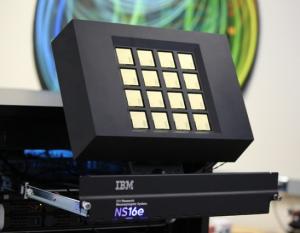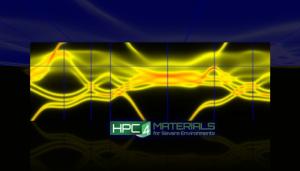LAB REPORT
Science and Technology Making Headlines
Aug. 19, 2016


Lawrence Livermore received the 16-chip IBM TrueNorth platform earlier this year.
Keeping an eye on the brain
IBM created a computer chip that works like a brain. Now, Samsung has used it to create a biologically inspired digital eye.
The IBM chip, called TrueNorth, is built of 4,096 tiny computing cores that form about a million digital brain cells and 256 million connections. Together they act like the brain's neurons, sending short messages to one another to process data. Lawrence Livermore, which has some of the world's fastest supercomputers, is using TrueNorth to explore the chip's role in areas such as cybersecurity and physical simulation.
The design, known as neuromorphic computing, marks a dramatic departure from traditional chips that run software packaged into strict sequences of instructions. Neuromorphic chips also are optimized to get large amounts of processing done without consuming as much power as traditional chips.


Ocean warming estimates in the Southern Hemisphere have been underestimated by as much as 58 percent.
It’s heating up
Climate change and global warming have generated much debate for the last several decades. There are very rapid changes in climate, and the data confirm it. This phenomenon is directly linked to, if not driven by, what’s going on in the Earth’s oceans.
A 2014 study by Paul Durack, a climate researcher at Lawrence Livermore, contends that global ocean warming estimates have been underestimated by as much as 58 percent due to sparse historical data, particularly from the Southern Hemisphere.
Durack says our oceans store roughly 90 percent of the excess heat associated with global warming. And when considering that the oceans in the Southern Hemisphere make up 60 percent of the world’s seas, that uncertainty level seems justified.

An optical image of a bulk-scale hierarchical nickel phosphorous lattice material with a network of hierarchical stretch-dominated octet unit cells. Photo courtesy of Xiaoyu Zheng and William Smith.
From nano to macros in 3D
Nanotechnology is proving to have applications in numerous scientific disciplines — from materials science to battery chemistries to solar energy — but so far it’s been difficult to scale materials up to provide the same benefits at a larger scale.
Engineers at Lawrence Livermore have achieved the ability to scale nanotechnology in 3D-printed architectures of arbitrary geometry, paving the way for super-strong, ultra-lightweight and flexible metallic materials for aerospace, the military and the automotive industry.
They took inspiration from the hierarchical structure of materials found in nature — such as wood and bone. The finished product: a nickel-plated metal material with high elasticity that integrates multiple levels of feature size, from nanoscale films to macroscale-unit cells.


A Lawrence Livermore Lab team, along with researchers from UC Santa Cruz, found that by sandwiching lithium ion and perchlorate ion between layers of graphene, they could substantially improve the performance of 3D-printed aerogel supercapacitors.
It keeps going and going
From smartphones to laptops, and increasingly in cars, batteries make the world go round. The only problem is that today’s generation of lithium batteries are increasingly incapable of providing energy on a scale needed — especially when it comes to the charges they hold and the time it takes to recharge them.
But there is a solution on the horizon, and it is being made possible by a radical material shift. Scientists from Swinburne University in Melbourne, Australia, have developed a new battery (technically speaking a supercapacitor) made from 3D-printed graphene, which can hold a larger charge of energy, is recharged in a matter of seconds and will last a lifetime.
Over the past year-and-a-half, researchers have also been extensively experimenting with 3D-printable forms of graphene — which is seen as one of the strongest materials in the world. And in many cases, supercapacitors and batteries have been very high on the agenda, thanks to graphene’s excellent energy-storage capacity. Researchers from the Lawrence Livermore have unveiled their own progress on 3D-printed graphene aerogel.


X-ray emission from the core of the Perseus cluster (in red), as observed by the Chandra X-ray Observatory, with the sharp edges enhanced by using a gradient filter; the radio emission from the central supermassive black hole is shown in blue. Image courtesy of NASA.
I spy the core of a massive object
International scientists have identified the dynamics of the core of one of the most massive objects in the known universe, bringing insight into the cosmology of clusters of galaxies.
The Hitomi collaboration, in which Lawrence Livermore scientist Greg Brown is a member, found that the turbulent motion of the intracluster gas in the Perseus cluster is only a small fraction of the mechanism responsible for heating the gas to 50 million degrees Kelvin. The Perseus cluster is a group of galaxies in the constellation Perseus. It is one of the most massive objects in the known universe, containing thousands of galaxies immersed in a vast cloud of multimillion degree gas.
The finding demonstrates that it is possible to infer an accurate mass of a cluster almost exclusively from its thermal hydrostatic pressure without having to rely on low accuracy measurements and estimates of the turbulent pressure of the system. Accurate cluster masses provide strong constraints on cluster cosmology and dark matter.





